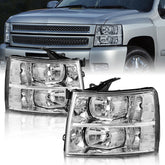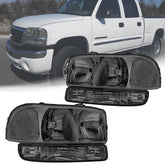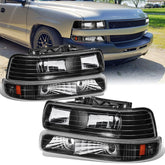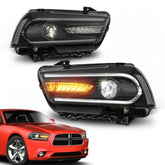How to remove fog or water from car headlights?
Have you ever encountered the problem of fogging or water in your headlights? Driving when your headlights are fogged or flooded is very dangerous, and it will seriously reduce your night vision. We know that you may be facing this problem when you are reading this article. You must want to know what caused it and want to solve it as soon as possible.
In this article, we will explain how this phenomenon occurs in car lights and share with you some tips to remove and prevent water or fog in the headlights. If you are interested in this, then continue reading.

Why is there fog or water in your headlight?
Cause of foggy headlights
Headlight fogging is mainly caused by humidity and heat. When the headlight assembly is working properly, the air around the bulb will heat up after a long time of operation, and in the case of halogen bulbs, the temperature is often higher. When the air cools down, the water vapor in the air condenses inside the headlight. The process of water vapor condensation is the conversion of gas into liquid, which is also called condensation. Generally, fogging of headlights is normal, and you just need to wait for a while for the water vapor to evaporate and the fog to dissipate on its own. One thing to note is that if there is too much fog and it does not dissipate, it indicates that there may be a problem with the headlight itself.

Cause of water headlights
If your headlight assembly has too much water and cannot drain, it's time to pay attention. Usually, this means that your headlight assembly has been damaged, allowing excess water to accumulate on the lens. It's also possible that your vents are clogged, preventing water from draining out of the headlight assembly. Another possible cause is that the seal of the headlight assembly has failed, allowing external water to seep into the housing through the gap. This water accumulation can damage the internals of the headlight and render the entire unit unusable. If the headlight housing is severely damaged, you should replace the headlight assembly without hesitation.
How to distinguish between water ingress and condensation?
We have investigated that many car owners cannot tell the difference between water in the headlights and condensation fog. They think that water has entered your headlights when they see water droplets. The method of judgment is very simple. Just observe the state of water vapor or water flow on the headlights.
If you see water vapor only formed under the headlights, and there is nothing on the upper part, it is generally just simple fogging.
If the headlights are flooded, the water will generally flow from the top of the headlights to the bottom of the headlights and will leave obvious watermarks.

How do you get water or fog out of headlights?
Before removing the water or fog in the headlights, you need to determine the severity of it. If it is only a minor problem, you can solve the problem with some tips. If it is serious, you need to disassemble the entire headlight. Here are some simple methods for car owners to solve the problem at home.
How to remove minor condensation?
If you have a small patch of fog or condensation in your headlights, you are in luck. You only need a few simple tricks, which can usually be done without damaging the seals. Let's look at how to fix this.
-
If your fog is caused by a clogged vent that prevents condensation from draining out, you can try using a vacuum cleaner to clean out the debris, dust, etc. that is blocking the vents.
-
As mentioned earlier, you can let the fog dissipate on its own. The important thing to note is that you should stay away from water at this time so that it can dry naturally faster.
-
If you encounter a sunny day, you can just remove the dust cover and park the car in direct sunlight. The fog will evaporate quickly. After evaporation, put the dust cover back on.
-
Alternatively, you can also pick up a hair dryer or heat gun and blow warm air into the housing to remove moisture. Be careful not to heat it too high.
-
The last little trick is to use a desiccant. Place a few packets of desiccant in the housing and let them absorb the moisture.

How do you remove major condensation?
If, unfortunately, your headlights have been flooded, it will be troublesome to deal with. Before you deal with it, you need to know how to remove the bulb, electronics, plugs, and any other removable components. Follow our steps to repair your headlights.
Step 1: Remove the Headlight Assembly
The first step is to remove the headlight assembly from the vehicle. We are going to be removing the clips that hold the headlight assembly in place. Once you have located these in different locations, you can use pliers to gently unhook them and remove the headlight assembly.
Step 2: Identify the source of the leak
After removing the headlamp assembly, the next step is to find where the water is entering. An effective way to do this is to fill the headlamp with water (after removing the bulb) and then observe where the water seeps out. This helps to identify the exact location of the leak.
Step 3: Dry the headlight
Before applying any sealant, dry the inside of the headlight thoroughly. You can place the headlight in the sun to allow it to evaporate naturally, or you can use a heat gun or hair dryer to speed up the process.
Alternatively, you can place the headlight in a box, cut a hole for the heat gun, and then carefully direct the heat toward the headlight. This method ensures that the headlight dries evenly without damaging the plastic.
Step 4: Seal the Leak
Once the headlight is completely dry, it’s time to seal the leak. To do this, you’ll need a waterproof, heat-resistant sealant, such as vinyl adhesive caulk or silicone sealant. Start by cleaning the area around the leak with a degreaser to ensure the sealant adheres properly. Then, apply a bead of sealant along the seam where the leak was found, making sure to get it into any gaps. Allow the sealant to dry completely before reinstalling the headlight. This usually takes about 15 minutes for the surface to become tack-free, but it may take up to 24 hours to fully cure.
Step 5: Check the O-ring and bulb housing
If you don't see a leak in the headlight housing, water may have entered through the bulb housing. Check the O-ring on the bulb for any damage, debris, or improper sealing. A damaged O-ring can allow water to seep in, especially when it rains or when washing the car. If the O-ring is damaged, replacing it or adding a small amount of dielectric grease can improve the seal.
Step 6: Reassemble and test the headlight
After the sealant has dried, reassemble the headlight by reversing the steps for disassembling the headlight. Make sure all clips are securely fastened and the headlight is aligned correctly. Finally, reconnect the bulb and test the headlight to ensure it is working properly and the problem has been resolved.
How to prevent water or fog from forming in headlights?
Rather than fixing our headlights after they have gone bad, we can avoid them by taking preventive measures. The most critical point is creating a strong seal. Also, make sure the vents are clear. Here are a few tips from our experts that we hope will help you:
-
Use a good sealant: Use a high-quality waterproof sealant to fill any gaps or seams in the headlight assembly.
-
Check the vents: Clean the vents regularly to ensure they are working properly.
-
Use a headlight cover: Consider using a protective headlight cover to prevent damage caused by debris, which may cause cracks and moisture to seep in.
-
Use your headlights wisely: When washing your car, avoid spraying cold water directly on hot headlights, as this can cause the lenses to crack or fog up.

Conclusion
The above is all our content. If your headlights are damaged beyond repair, please be sure to replace them in time. Safe driving requires the headlights to be in good working condition. Come to MOSTPLUS to choose the headlights you need. We have professional staff to answer all your questions. I wish you to repair your headlights as soon as possible.
Featured Products
- $116.99
$124.45- $116.99
- Unit price
- / per
- $96.99
$99.99- $96.99
- Unit price
- / per
- $96.99
- $96.99
- Unit price
- / per
- $368.99
$435.77- $368.99
- Unit price
- / per














